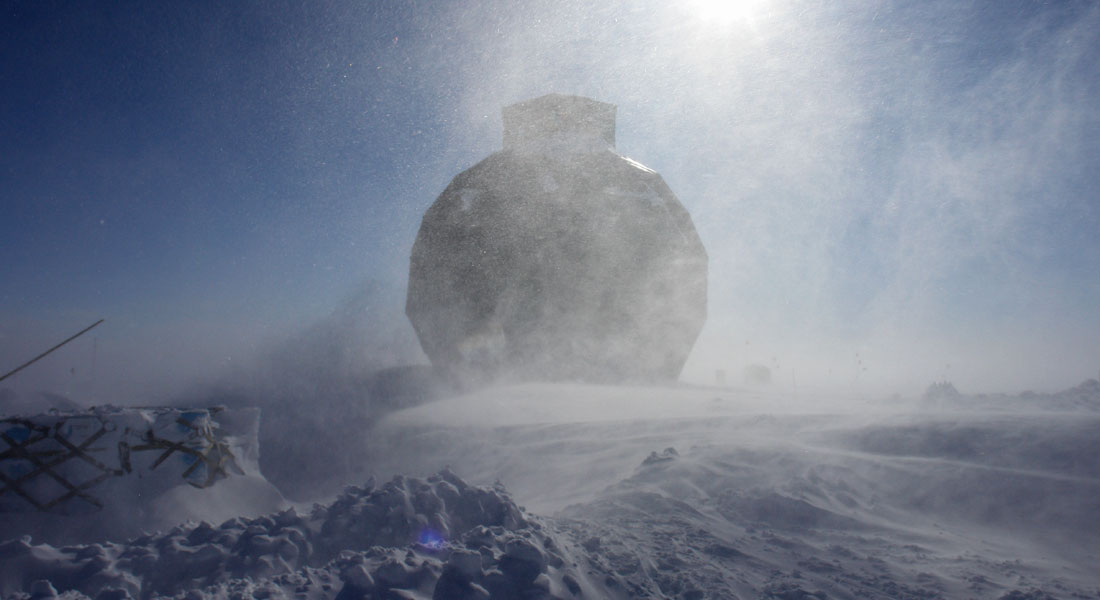PICE Copenhagen joins large scale joint effort in the arctic within the Danish Commonwealth
The Ministry of Higher Education and Science has awarded just below 37 million kr to a targeted effort to investigate the significance of climate change in the arctic environment, how fast the changes are occurring and how they will impact other parts of the globe. The project links all the stakeholders in the Danish Commonwealth in one network.

Under the name, GIOS - Greenland Integrated Observatory System – the Danish Commonwealth carries the collection of data to an entirely new level. The project has a duration until the end of 2025, where a new research infrastructure, headed by Aarhus University, will be in place and ready to deliver measurements on air, ice, land and sea in the arctic region many years ahead. GIOS commands a budget of around 80 million DKK
Coordinated effort
Greenland plays a unique and central role in the global climate system and covers all existing climate gradients in the Arctic. For this reason it is crucial for the entire globe to understand the changes happening in Greenland, in order to be able to better predict the effect of the global climate changes.
“We are very happy about the grant from the Ministry of Higher Education and Science. It will boost the collaboration between all arctic research environments and ensure the leading role of the Danish Commonwealth in the international arctic research - and in extension, a decisive voice in the international debate”, says Rector Brian Bech Nielsen, Aarhus University
“For the Ice, Climate and Gephysics section, the grant gives us the opportunity to strengthen the collaboration with all the other stakeholders and allows for the individual units to become a bigger and stronger unit together”, Professor Dorthe Dahl Jensen, from the Niels Bohr Institute, University of Copenhagen.
The common project is an extension of the so called Hindsgavl initiative, where the commonwealth’s arctic stakeholders have discussed the necessity of combining the expertise across all institutions for the last eight years, in order to be able to describe the mechanisms in climate change in the arctic region and be able to strengthen the collaboration with international partners.
A mobile station on the inland ice sheet
GIOS will enable the EGRIP ice drilling camp to become a completely mobile and “greener” camp on the ice sheet of Greenland. Ci aim to place solar panels on the entire top of the Dome, so the sun, shining 24/7 in the summer period, can be used for energy to power the camp. Additionally, we wish to invest in a beltdriven vehicle (a Pistenbully), snowmachines and advanced plastic sleighs, so the entire camp can be moved across the ice.
This will enhance the possibility to have more mobile programs on the ice sheet and allow us to move to new drilling locations in the future. Monitoring the ice sheet and the changes going both back and forwards in time are incredibly important to ascertain the sea level rise we shall be seeing in the future in a more precise way.
“A camp in the middle of the ice sheet will immediately become a point of gathering for projects both nationally and internationally – a gateway to a research area with difficult accessibility”, Dorthe Dahl-Jensen, leader of the EGRIP project, University of Copenhagen, says.
“The new GIOS effort provides us with a far better data-basis to understand the swift changes in the arctic and will simultaneously provide input for international models, ensuring a better understanding of how the current changes in and around Greenland impact the global climate and the living conditions for humans, animals and plants”, says Søren Rysgaard, head of Arktisk Forskningscenter, Aarhus University, also spearheading the entire project.
All stakeholders in one team
The GIOS collaboration involves Geenland Institute of Natural Resources, Aarhus University, University of Copenhagen, Technical University of Denmark, GEUS – Geological Survey of Denmark and Greenland, Aalborg University, Danish Meteorological Institute, Arctic Command, University of Southern Denmark, Greenland National Museum and Archives, the National Museum of Denmark, University of Greenland and Havstovan in the Faroe Islands.
Topics
See also:
Contact
Further information:
Coordinator from University of Copenhagen, Professor Dorthe Dahl-Jensen, Niels Bohr Institute, University of Copenhagen (ddj@nbi.ku.dk; +45 22894537)
